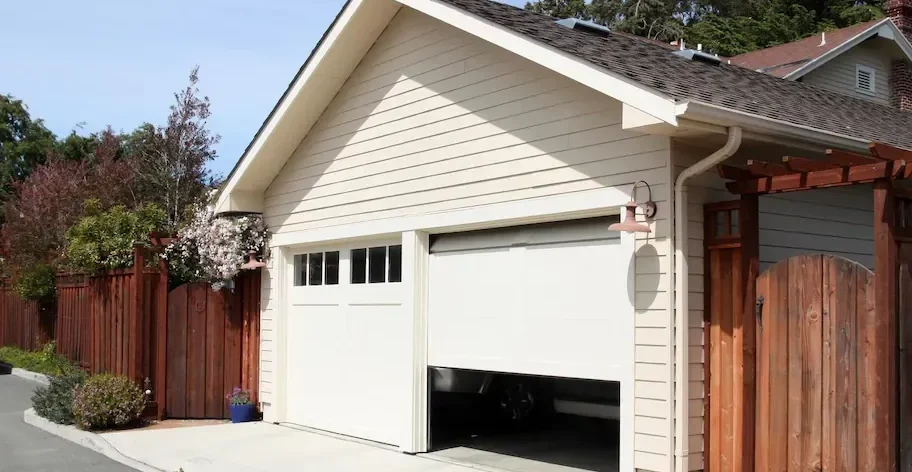Garage door openers have become an indispensable part of our daily lives, offering convenience, security, and ease of access to our homes. While many of us use them without much thought, these devices are equipped with various components that play crucial roles in their operation. One such component is the limit switch. In this article, we will delve into the world of garage door opener limit switches, understanding what they are, how they work, and why they are essential for the safe and reliable operation of your garage door.
What Are Garage Door Opener Limit Switches?
Garage door opener limit switches are safety mechanisms designed to regulate and control the travel distance of the garage door. They serve as a vital part of the automation process, ensuring that the door opens and closes to the correct positions consistently. Limit switches are typically located on the garage door opener unit, often near the motor, and are connected to the opener’s drive mechanism.
These switches are activated by physical contact with specific points along the garage door’s rail system, either during the door’s upward or downward movement. When the door reaches the predetermined open or closed position, the limit switch is triggered, sending a signal to the garage door opener to stop the motor and halt the door’s movement. This precise control is what enables the garage door to open and close accurately, preventing damage to the door, the opener, and ensuring the safety of anyone in its path.
How Garage Door Opener Limit Switches Work
The operation of garage door opener limit switches is relatively straightforward, yet it is essential for the proper functioning of your garage door. Here is a step-by-step breakdown of how they work:
- Initialization: When you activate your garage door opener to open or close the door, the opener’s motor starts running, engaging the drive mechanism (which can be a chain, belt, or screw drive).
- Door Movement: As the motor operates, it powers the opener’s trolley or carriage, which is connected to the garage door via an arm. The trolley moves along the rail, either pulling the door upward or pushing it downward.
- Contact with Limit Switch: At specific points along the rail, the trolley makes contact with the limit switches. These points are strategically positioned to correspond to the fully open and fully closed positions of the garage door.
- Limit Switch Activation: When the trolley contacts a limit switch during the door’s movement, the switch is activated. This sends an electrical signal to the garage door opener, instructing it to stop the motor.
- Door Stops: The garage door comes to a halt at the predetermined open or closed position, as dictated by the limit switch. It remains in this position until you activate the garage door opener to change its status.
- Safe and Controlled Operation: The limit switches ensure that the door stops at the correct positions, preventing it from overextending or colliding with obstacles. This precise control ensures the safety of both the garage door and anyone in its vicinity.
The Importance of Limit Switches
Garage door opener limit switches play a pivotal role in the overall functionality and safety of your garage door system. Here are several reasons why these switches are essential:
- Prevent Overtravel: Limit switches are crucial for preventing overtravel of the garage door. If the door were to continue moving beyond its intended open or closed position, it could lead to damage to the door itself, the opener, or even the garage structure.
- Safety: Limit switches enhance safety by ensuring that the garage door stops at the correct positions. This prevents accidents, injuries, or damage that might occur if the door were to close on an object or a person.
- Protection of Components: By halting the door’s movement precisely at the open and closed positions, limit switches protect the garage door opener’s motor and drive mechanism from unnecessary wear and strain. This prolongs the lifespan of these components.
- Consistency: Limit switches ensure consistent and accurate door operation every time you use your garage door opener. This reliability is crucial for the convenience and peace of mind that garage door openers provide.
- Customization: Many garage door openers allow for the adjustment of the limit switch settings. This customization feature enables you to set the open and closed positions to meet your specific needs, accommodating various door sizes and configurations.
Signs of Limit Switch Problems
While garage door opener limit switches are designed to function reliably, they can experience issues over time. Recognizing the signs of limit switch problems is crucial for addressing them promptly and ensuring the continued safe operation of your garage door. Here are some common signs of limit switch issues:
- Incomplete Door Movement: If your garage door opens or closes partially but does not reach the fully open or closed position, it may indicate a limit switch problem. The switch may not be triggering correctly, causing the motor to stop prematurely.
- Excessive Force: If your garage door opener exerts excessive force when opening or closing, it could be due to limit switch misalignment or wear. The opener may not recognize the limit switch activation, leading to increased force exertion.
- Inconsistent Operation: Inconsistent door operation, such as stopping at random positions or failing to stop when it should, can be a sign of limit switch issues. These inconsistencies may pose safety risks and require immediate attention.
- Unusual Noises: Unusual or grinding noises during door operation can indicate that the limit switch is not functioning correctly. These noises may occur when the door’s movement is obstructed or when the motor continues to run despite reaching the limit switch.
Maintenance and Adjustments
Proper maintenance and occasional adjustments of the limit switches can help ensure their continued reliability and functionality. Here are some maintenance tips:
- Visual Inspection: Periodically inspect the limit switches for any signs of wear, damage, or misalignment. Ensure that they are securely mounted to the garage door opener unit.
- Cleanliness: Keep the rail system and limit switch contact points clean and free from dirt, debris, or obstructions. A clean surface ensures proper contact and activation.
- Lubrication: Lubricate the moving parts of your garage door opener regularly, including the rail system and trolley. Lubrication reduces friction and helps ensure smooth limit switch activation.
- Professional Maintenance: Consider scheduling regular professional maintenance for your garage door opener. A trained technician can inspect, adjust, and troubleshoot limit switch issues as part of a comprehensive service.
- Adjustment if Necessary: If you notice any signs of limit switch problems, consult your garage door opener’s user manual for instructions on adjusting the limit switch settings. Some openers allow for user adjustments to fine-tune the open and close positions.
Conclusion
Garage door opener limit switches may be inconspicuous components, but they are instrumental in ensuring the safe, reliable, and controlled operation of your garage door. By regulating the door’s travel distance and preventing overtravel, these switches protect your door, opener, and, most importantly, the safety of those around it. Regular maintenance, inspections, and prompt attention to any limit switch issues will help ensure that your garage door continues to operate smoothly and securely for years to come.





